Last week when I dropped a hefty hint about the handiness of the show brochure, you may have thought that one of the categories, retailer, sounded a bit boring. To be fair, you would only have thought that if you are not a miniaturist. As enthusiasts are well aware, the smaller it gets the more interesting it becomes and the harder the hunt for the good stuff to make or collect. As miniatures are enjoyed in many countries round the world, so hobbyists are indebted to retailers who do all the legwork necessary to get everything in one place so that all we have to do is choose.
A good case in point would be Judith Dowden who trades as In Some Small Way and imports smaller scale houses and kits. Smaller scale, here meaning less than twelfth scale and all the way down to dolls houses to go in dolls houses, which could be a 144th scale to go in a 12th scale house. If that sounds confusing, perhaps a picture will clarify matters.
To the uninitiated this looks like a nice dolls’ house cabinet and at 8 inches tall, 5 inches wide and 1 1/2 inches deep, you’d think it was a perfect 12th scale replica of a full size item, which it is. However, as miniaturists are well aware, two or three hundred years ago Dutch society ladies were prone to turning exactly such pieces of furniture into dolls’ houses. They did it so well that some have survived and can be visited in museums or historic houses. Unless, that is, you’re a miniaturist, in which case, you can have one of your own!
The six rooms of the house part of this cabinet fit in a space roughly equal to the size of your hand. No piece of furniture is taller than 3/4 inch (that’s 2cm). You don’t have to have a dolls’ house to put this in, some miniaturists don’t have houses, just a collection of little things. This little thing would be a talking point on your real mantelpiece but would you stick your choice of furniture down so you could hand it to people when they asked, or would you have it loose so you could rearrange it? Would you keep a spare set of completely different furniture in the drawers? More micro-miniatures at www.insomesmallway.co.uk
The marvel to the new miniaturist is the discovery that everything that exists in full size life also exists in miniature, including antique items that you’d be lucky to find at all in real life. Miniature collectables are made anew to replicate broken, lost or rare bygones, by craftsmen with full size lifetime skills. Glass is a good example of this type of miniature and Phil Grenyer of Glasscraft is such a craftsman. Glass is a very difficult substance to work with, fully justifying the five year apprenticeship required to acquire the skills. Many skilled miniaturists wear their abilities very lightly; when I interviewed Phil some years ago I recall him tossing the phrase ‘Oh you don’t want to be walking on too much broken glass, you know,’ into the conversation. Here are some examples of the beautiful things he makes, so unassumingly. If you do visit the Glasscraft stand, you shouldn’t let the pocket money prices fool you. As with all miniatures, first you have to find a group of craftsmen able to produce the work and then some willing to have a go in miniature and then one or two of those who will keep trying until they get really good at it. Like this:
If you wanted to collect full size Victorian Cranberry glass you would need deep pockets and a good deal of patience, the hunt would be painstaking and the trophies, if undamaged, pricey to say the least. If you decide to make your collection in miniature, you’ll be spoilt for choice, the picture shows just a tiny sample of Phil’s range. This is the hobby for the average collector with champagne tastes and beer money with the added incentive that you don’t need much space for an extensive collection and that practically everything that’s lovely in full size is even lovelier in miniature.
Painstaking is an apt adjective for Miniatura craftspeople. Some go to extraordinary lengths for their art. Annie Willis, who you will find at the show under the name of Fine Design, is as painstaking as they come. Annie makes really furry, feathery creatures by sticking the fur and feathers on one hair at a time, in what by now must be numbered in many thousands of individually glued hairs. Oh yes she does. The result is strokeable cats, pattable dogs and cuddly hamsters. I first met one of Annie’s rabbits in a dolls’ house shop, years before I met Annie. I must have had the bunny about twenty years at least and it hasn’t moulted yet and is still as furrily appealing as ever. Here is the latest tableau, which is a genuine work of art, one feather at a time, this is so new from the artist it hasn’t been named yet.
Impressive as a set piece, like all of Annie’s work this is better in the hand because of the strokeability, it’s hard to keep your mitts off the feathery breast of the hen or the little fluffy chicks. I like the way Annie has made them so you can see what the birds are thinking.
If your collector fingers have started itching, further details are at www.miniatura.co.uk as always, where you will see the show described as Miniatura International for good reasons. The three artisans featured here, although resident in the UK, hail from America, the North East of England and Australia respectively and are representative of the craftsmanship on show from many nations. In miniatures we rejoice in our varied abilities and our coming together to celebrate the pleasure that can be taken in a world you can hold in your hand.

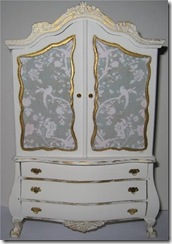
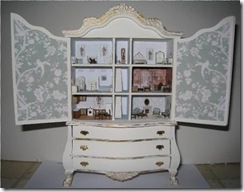
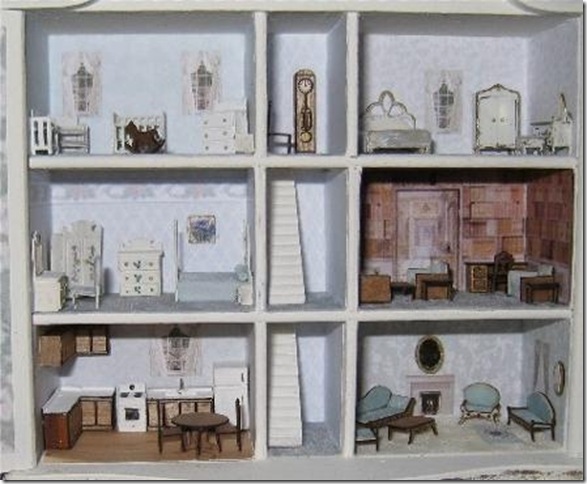
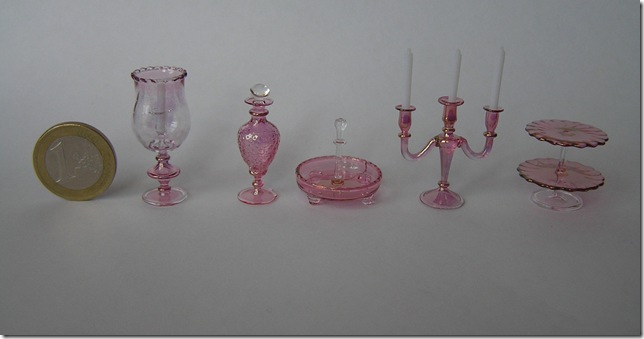
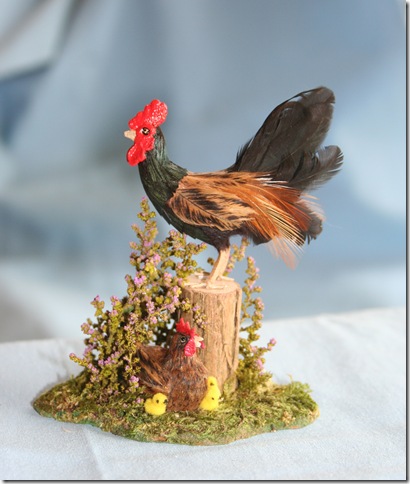
Pingback: Midweek Miniatura, miniature marvels. | JaneLaverick.com | TeenyDollHouse.Com